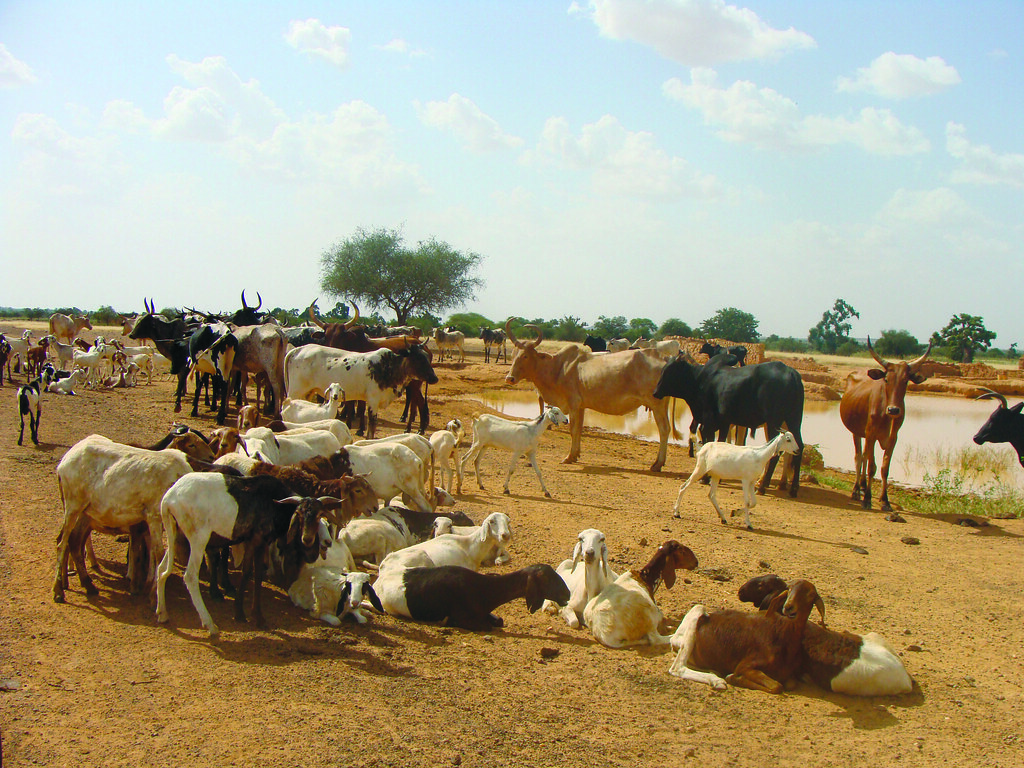From 2 to 4 October, three Bon Buzz reporters attended the ‘Agriculture, Pastoralism and Protected Areas conference: Tensions and solutions for the future of rural areas in Central Africa and the Sahel’ at the L’Amitié hotel in N’Djamena. Following this conference, they wrote a blog.
In Chad, particularly in the south of the country, nerves are frayed when it comes to the conflict between herders and farmers. In an effort to mitigate the situation, the authorities are marking out the transhumance corridors to allow each side to respect its territory. But in the process, misunderstanding or ignorance of the existence of the old transhumance corridors gives way to speculation that the local authorities are allocating farmland to transhumant herders.
Chad’s population is estimated at around 13 million, 80% of whom live in rural areas and derive most of their food from livestock and agriculture according to the 2017 National Development Plan (NDP). As such it is an agro-pastoral Sahelian country where the rural sector plays a major role in the national economy through the development of livestock products.
But due to the effects of climate change livestock breeders have changed their approach, taking on an adaptation strategy based on transhumance to find pasture for their cattle. Transhumance corridors are created to allow the animals to pass through cultivated areas or to give them access to boreholes, wells or water basins. The movement of herds along these corridors can affect farmers’ crops. As they move, these herders are confronted with conflicts with farmers when their herds devastate the latter’s fields.
The birth of conflict
On the one hand, the indigenous farmers accuse the authorities of illegally taking their fields and giving them to the nomadic herders. The authorities, whose role it is to resolve problems fairly, are accused of siding with the herders. “The cattle belong to the country’s top executives, particularly the army generals, so the local authorities are playing into their hands,” said a farmer at a conference on livestock herderr-farmer conflicts. On the other hand, the herders accuse the farmers of taking up residence in the grazing corridors. This situation creates tensions ranging from the simple to the very serious.
The result of all these problems is a lack of communication and awareness around the transhumance corridors. How are these corridors marked out? What are the rules when it comes to transhumance corridors?
As part of this drive to promote pastoral livestock farming in the Sahel zone with as few conflicts as possible, the Programme de Renforcement de l’Élevage Pastoral (PREPAS) has set up detailed management of access to natural resources (water, pasture and land). This involved marking out transhumance corridors as transit routes and access routes to strategic resources (pasture and water) for animals (Ali Brahim Béchir, 2023).
Better understanding of the transhumance corridor process
In order to mark out a transhumance corridor, there is a process for its materialisation. Projects and programmes have set up mechanisms to alleviate the problems associated with conflicts over transhumance corridors. According to Professor Ali Brahim Béchir, agropastoralist and national technical adviser to PREPAS, “we don’t mark out a corridor but a section. It could be 100 metres or 3 km, maybe 10 km, but in areas where there is agriculture and the corridors are under threat.”
The marking out of transhumance corridors is generally carried out in the presence of farmers, stockbreeders, administrative and traditional authorities and technicians, who come together to consult. “When we say marking out corridors, we don’t mean creating them. The corridors have existed for years, ever since Chad became Chad,” says the agro-pastoralist. If the process is as such, why are there so many conflicts and misunderstandings around the transhumance corridors?
Demographics need to be taken into account
Given the demographic and environmental changes, the situation is such that the corridors are beginning to be invaded by crops because the population has increased. And so have their needs.
Another factor is that where animals pass through, the soil receives manure from the dung of cows and other animals. As a result, sedentary farmers are attracted to these lands, which were once poor. The occupation of these transhumance corridors by sedentary farmers creates conflict between the latter and transhumant herders.
The other reason given by Prof. Béchir is that, since Chad is a country that has suffered from conflict, some corridors were abandoned by transhumants because of the insecurity during that time. “Now that security has returned, the transhumants are obliged to resume their route. But when they came back, and as we’re used to saying, nature abhors a vacuum, the farmers sowed in these corridors, which heightened tensions,” says Professor Béchir.
What can we learn from this?
As far as farmers’ complaints are concerned, the agropastoralist points out that the marking out of transhumance corridors considerably reduces the number of cases of pastoral conflicts, provided that these tracks are used by the herders.
However, when conflicts arise over transhumance corridors, we have to negotiate with the farmers either to open them up or to bypass them, and that’s always a matter for consultation. But if you don’t consult and invite community leaders, that’s where the problem comes from,’ stresses Professor Ali Brahim Béchir.
All in all, we need to raise awareness among local authorities and opinion leaders in every locality where there are transhumance corridors. These corridors have always existed, and all we need to do is raise awareness among the aforementioned leaders if we are to reduce the number of conflicts between farmers and herders over access to land, if not to the transhumance corridors. Raising awareness is the most recommended method of conflict prevention.





